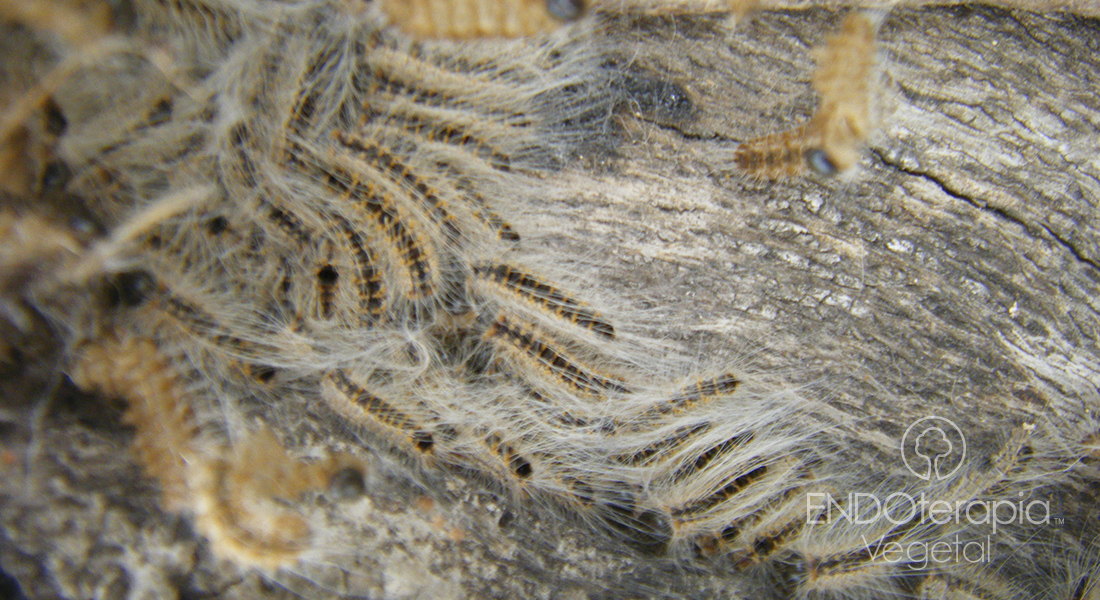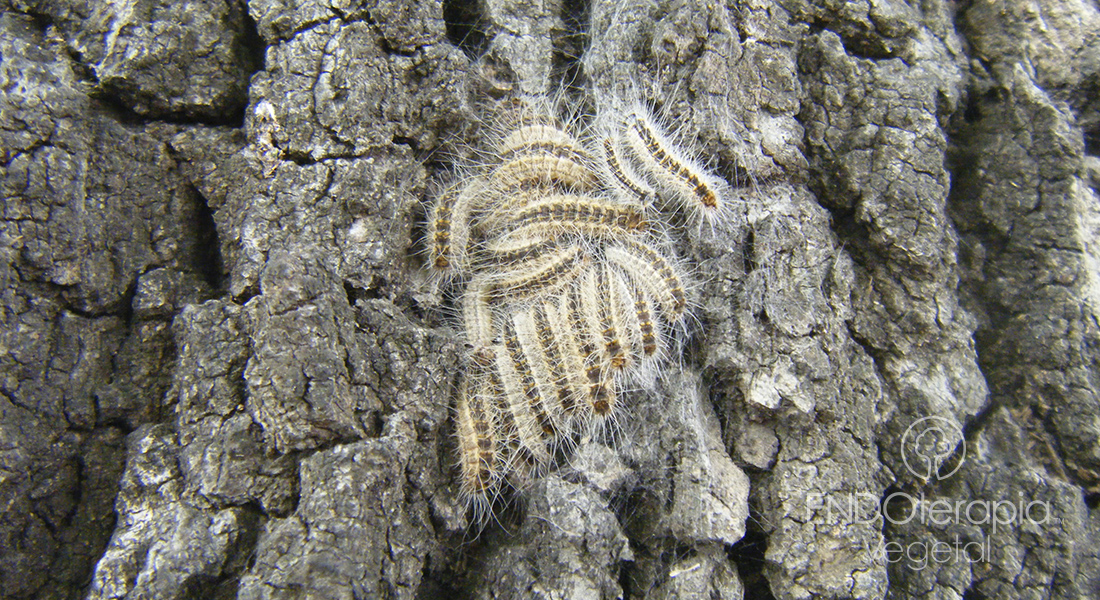Project Description
They spend the winter in egg form and it is in spring when the caterpillars emerge and start to feed. In their sixth instar, they enter their chrysalis sack, where they go through metamorphosis. At the end of August, the adult moths emerge and mate. Then, they lay eggs for the next generation that will be born the following year. They have an annual generation.
This is an infrequent pest in our country, but it causes serious damage to the oaks, leaving them partially or completely defoliated. In addition, this pest is very dangerous for humans and animals, as the caterpillar releases very urticating hairs that cause serious anaphylactic reactions.
Since this is a rare pest in our country, normally curative treatments are always carried out. The optimal time for treatment should be when the first caterpillars are detected.







